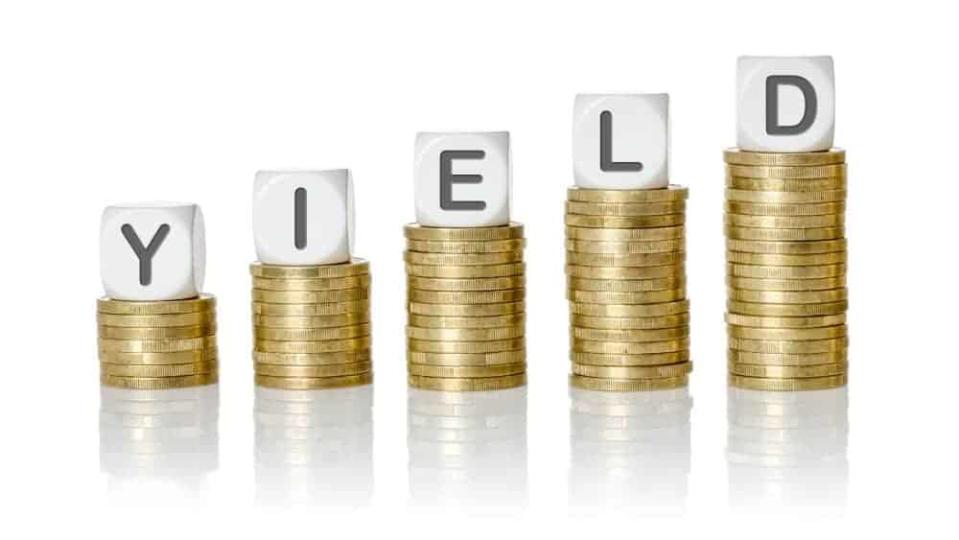RRSP Investing: How to Build Wealth Using High-Yield Dividend Stocks

Written by Andrew Walker at The Motley Fool Canada
Canadian investors can use their self-directed Registered Retirement Savings Plan (RRSP) to build portfolios of investments to generate retirement income in addition to company and government pensions. One popular RRSP investing strategy involves owning top dividend stocks and using the distributions to acquire more shares.
Power of compounding
Patience and commitment are key to using the dividend reinvestment strategy to build RRSP wealth. Each time dividends are used to buy new shares, the size of the next dividend payment increases. When the share price of the stock pulls back, investors benefit from being able to average down their costs and get a chance to add more shares to the holding. As the share price increases, dividends might buy fewer new shares, but the value of the portfolio rises.
Many companies provide a discount on the share price when investors take advantage of the firm’s dividend-reinvestment plan (DRIP). The reason for the discount is to keep more cash inside the company to shore up the balance sheet or fund growth opportunities. DRIP discounts can change depending on the cash needs of the company, and discounts tend to range from 0% to 5%, with a 2% discount being common.
The benefit of reinvesting dividends is small in the beginning, but the impact can be significant over the course of two or three decades, especially when dividend payments increase steadily and the share price trends higher.
Fortis
Dividend investors often overlook Fortis (TSX:FTS) due to its low yield compared to other popular dividend stocks. This might be a mistake, especially when searching for top dividend-growth stocks to add to a buy-and-hold RRSP portfolio.
Fortis is a utility company with $68 billion in assets spread out across Canada, the United States, and the Caribbean. Nearly all of the revenue comes from rate-regulated assets. This means cash flow tends to be reliable and predictable, which is important for investors who want steady dividend payments.
Fortis grows through a combination of capital projects and acquisitions. The current $25 billion capital program is expected to boost the rate base from $37 billion to nearly $50 billion by 2028. As new assets go into service, the company expects cash flow to improve enough to support planned annual dividend increases of at least 4%. That’s good guidance in an uncertain economic climate.
Fortis trades near $53.50 at the time of writing. The stock isn’t as cheap as it was last fall, but it still looks attractive, with more upside likely on the way. The Bank of Canada has already started to cut interest rates, and the U.S. Federal Reserve is expected to begin cutting rates later this year or in early 2025. Lower borrowing costs are good for utilities like Fortis that use debt to fund part of their growth programs.
Fortis has increased the dividend annually for the past 50 years. At the current share price, investors can get a 4.4% dividend yield. Fortis offers a 2% discount on shares purchased through the DRIP.
A $10,000 investment in Fortis 25 years ago would be worth about $96,000 today without the dividends reinvested. If all the dividends had been used to buy new shares, the holding would be worth roughly $158,000 right now.
The bottom line on top RRSP stocks
Fortis is just one example of a top dividend stock that can be used to build retirement wealth. There is no guarantee that future returns will be the same as those enjoyed in the past 25 years, but Fortis still deserves to be part of a diversified RRSP portfolio.
The strategy of using dividends to buy new shares is a proven one that can help investors turn relatively small initial holdings into meaningful long-term savings. Many top TSX dividend-growth stocks now trade at attractive prices.
The post RRSP Investing: How to Build Wealth Using High-Yield Dividend Stocks appeared first on The Motley Fool Canada.
What Stocks Should You Add to Your Retirement Portfolio?
The Motley Fool Stock Advisor Canada analyst team just identified what they believe are the 10 best stocks for investors to buy now. The 10 stocks that made the cut could produce monster returns in the coming years, potentially setting you up for a more prosperous retirement.
Consider when "the eBay of Latin America," MercadoLibre, made this list on January 8, 2014 ... if you invested $1,000 at the time of our recommendation, you’d have $18,111.92.*
Stock Advisor Canada provides investors with an easy-to-follow blueprint for success, including guidance on building a portfolio, regular updates from analysts, and two new stock picks each month – one from Canada and one from the U.S. The Stock Advisor Canada service has outperformed the return of S&P/TSX Composite Index by 27 percentage points since 2013*.
See the 10 stocks * Returns as of 5/22/24
More reading
Can You Guess the 10 Most Popular Canadian Stocks? (If You Own Them, You Might Be Losing Out.)
How to Build a Bulletproof Monthly Passive-Income Portfolio in 2024 With Just $25,000
The Motley Fool recommends Fortis. The Motley Fool has a disclosure policy. Fool contributor Andrew Walker has no position in any stock mentioned.
2024

 Yahoo Finance
Yahoo Finance 